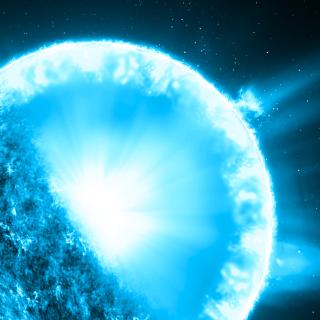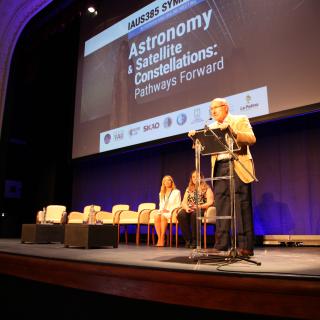This astronomical event will be broadcast live via the channel sky-live.tv in the early hours of January 4th, with the collaboration of the European project EELabs. Together with the Geminids and the Perseids, this is the most intense meteor shower of the year.
The three most spectacular meteor showers of the year are the Perseids (in August) the Geminids (in December) and the Quadrantids in the first week of January. Although the Perseids are the best known, the maximum is in a holiday period with mild night-time temperatures, the Geminids and the Quadrantids never let us down, with an activity which reaches 100 meteors per hour (zenith hourly rate, ZHR) and remains constant year by year (the activity of the Quadrantids in 2019 in IMO).
The Quadrantids are at their maximum during the first week of January. For 2020 this maximum is predicted for 08:20 UT on January 4th. So that in Europe the night of January 3rd-4th will be the best moment to observe them. It is best to wait until the early morning of the 4th of January, when the constellation of Bootes is high in the sky, and there will not be a Moon. The final activity of meteors is predicted at an average rate of one every 4 minutes, some of them very bright, if we are at a dark site with a clear view to the horizon.
As the radiant, the point in the sky from which the meteors appear to diverge, is near to the Plough, in fact within the constellation of Bootes, which occupies a part of the now no longer used constellation of Quadrans Muralis, (which is why they are called the Quadrantids) their activity is not seen in the southern hemisphere.
The Quadrantids and the Geminids are special meteor showers
So called “shooting stars” are really tiny particles of dust with a range of sizes, some smaller than grains of sand, which are left behind by comets during their orbits around the Sun. The current of particles produced this way (called meteoroids) produced by the thawing of the comet as it is affected by the Sun’s heat, is dispersed along the comet’s orbit, and it is traversed every year by the Earth in its orbit round the Sun.
During the encounter the particles of dust disintegrate when they enter the Earth’s atmosphere, making the well know luminous trails which are called, scientifically, meteors. This general picture is valid for most meteor showers, but for the Quandrantids and the Geminids there is not comet whose path around the Sun coincides with this cloud of “debris”.Their progenitors are asteroids, 3200 Phaeton, for the Geminids, and 2003 EH for the Quadrantids.
Live from the Teide Observatory
Within the popularization initiatives of the European Project EELabs (eelabs.eu), the channel sky-live.tv will offer a live broadcast of the meteor shower from the Teide Observatory (IAC, Tenerife, Islas Canarias).
The appointment is in the early morning of Saturday, January 4th at 6.30 UT (which is local time in the Canaries and the UK, and 7.30 Central European Time)
“It`s never eay to get up at six in the morning, especially in early January, with holidays and cold weather, but it is worth it.This year there will be no Moon,so that we should seen a pretty spectacle with activity at almost a hundred meteors per hour” comments Miquel Serra-Ricart, an IAC astronomer.
EELabs (eelabs.eu) is a project funded by the Programme INTERREG V-A MAC 2014-2020, cofinanced by FEDER (The European Fund for Regional Development) of the European Union, under contract MAC2/4.6d/238. There are 5 centres in Macaronesia working within EELbs (IAC, ITER; ULPGC, SPEA-Azores, SPEA-Madeira). The aim of EELabs is to create Laboratories to measure the energy efficiency of the artificial night lighting in the natural protected areas of Macaronesia (the Canaries, Madeira, and the Azores).
Three Spanish Supercomputer Centres: the Extremadura Centre for Advanced Technology (CETA-CIEMAT, the Consortium of University Servers of Catalonia (CSUC) and the Instituto de Astrofísica de Canarias (IAC) collaborate in the distribution and the broadcasting of the web portal (sky-live.tv).
Audiovisual material
Star counters and app (www.contadoresdeestrellas.org)
The best Quadrantids of the year 2017 (https://flic.kr/p/2i583k6)
Images and videos of meteor showers (https://flic.kr/s/aHsjH2BFa4)
CAPTION: Meteors registered at the Teide Observatory (IAC) between 06:13 h and 06: 38 h UT (Local Canary time) on 4th January 2107. The brightest star to the left is Procyon (alpha Canis Minoris) while Castor and Pollux (alpha and beta Geminis respectively) are almost in the centre. The cluster which in the upper part of the picture is Praesepe (the Beehive) in the constellation of Cancer. Most of the meteors recorded are Cuandrantids. High resolution image at https://flic.kr/p/J1T4Yn







